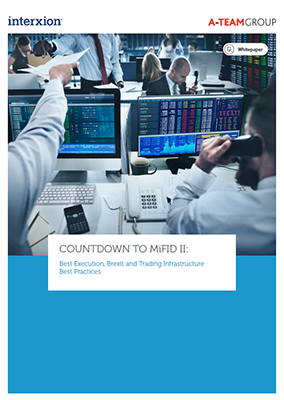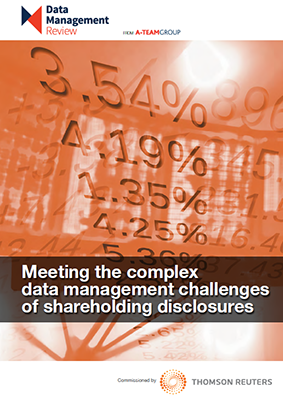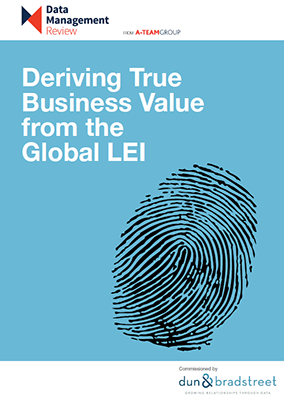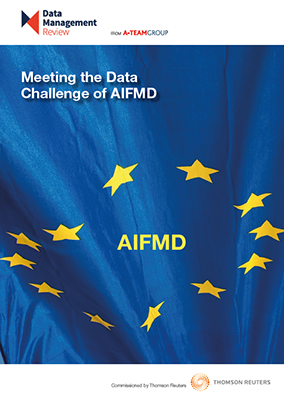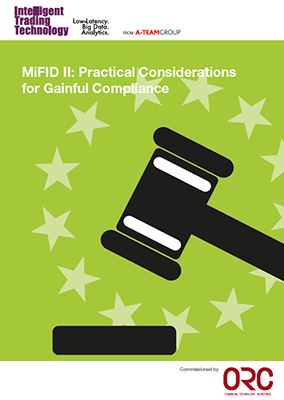RegTech Insight White Paper
Countdown To MiFID II: Best Execution, Brexit and Trading Infrastructure Best Practices
The events of 2016 have muddied the waters for financial institutions operating in Europe that need to figure out how planning for possible outcomes of Brexit will in turn affect compliance with European MiFID II regulation taking effect in January 2018. While it is widely recognised that firms will have to make major changes to...
Meeting the Complex Data Management Challenges of Shareholding Disclosures
Getting shareholder disclosure right has become a priority for financial institutions that are already required to monitor breaches of ownership thresholds that are used to protect sensitive industries, but must also comply with the EU Transparency Directive Amending Directive (TDAD). The directive came into effect in November 2015 and requires firms to analyse holdings of...
Harmonising the Approach to Regulatory Compliance
Regulatory compliance is key to financial institutions, but it can be costly and difficult to achieve in an environment where new regulations are constantly on the horizon and must be implemented efficiently and effectively. This White Paper, sponsored by Thomson Reuters and based on a survey of close to 70 senior data managers, discusses how...
Deriving True Business Value from the Global LEI
The Legal Entity Identifier (LEI) – the free-to-use entity identifier – has established itself as a viable standard for helping financial institutions identify unique business entities that are parties to financial transactions. But it’s widely accepted to have its limitations. In particular, a lack of standardization and ability to link to associated data sets is...
Entity Data Quality: New Approaches and the Four Categories of Data Quality Management
Legal entity data is critical to data strategy, business decisions and regulatory compliance, but it can be a challenge to ensure the data is accurate and reliable as the entity universe is large, millions of attributes change every year and inconsistent codes and symbologies identifying entities, corporate hierarchies and ultimate beneficial owners must be managed....
Meeting the Data Challenge of AIFMD
The Alternative Investment Fund Management Directive (AIFMD) came into effect in 2013. Most financial institutions within its scope, particularly hedge funds and firms that service those funds, have since completed the majority of work required to meet their obligations under the regulation, but some thorny data management issues remain. Hedge funds are challenged by the...
Navigating BCBS 239 and the New Stress-Testing Regime
Rigorous stress testing – and emerging regulations like Basel’s BCBS 239 – mean that the risk and finance functions can no longer act in isolation. Regulators are increasingly seeking a true, holistic view of risk. To deliver on the new requirement, banks need to reinvent their infrastructures and operating models, making sure all elements of...
Tracking bonds for Solvency II’s Matching Adjustment
How are you tracking bonds that are eligible for Solvency II’s Matching Adjustment (MA)? With the January 2016 deadline looming, insurance companies and the asset managers that service them need to be able to identify eligible assets in their portfolio. But there’s no single list, rather a set of criteria to be followed, resulting in...
A Utility Approach for Operational Process Improvement
Data management is a high-cost, no-margin activity for financial institutions across the board. Business requirements and regulatory pressure demand more depth of processing and breadth of reporting than ever before. At the same time, high quality data sourcing, validation and enrichment are essential to achieving operational optimization. Yet most firms are reluctant to increase investment...
MiFID II: Practical Considerations for Gainful Compliance
The EU’s Markets in Financial Instruments Directive (MiFID) II – which applies from January 2018 – aims to extend the market transparency introduced by its predecessor regulation to new areas of the marketplace. In many cases, MiFID II will be more granular, more prescriptive and more onerous than MiFID I, raising business and technology challenges...


